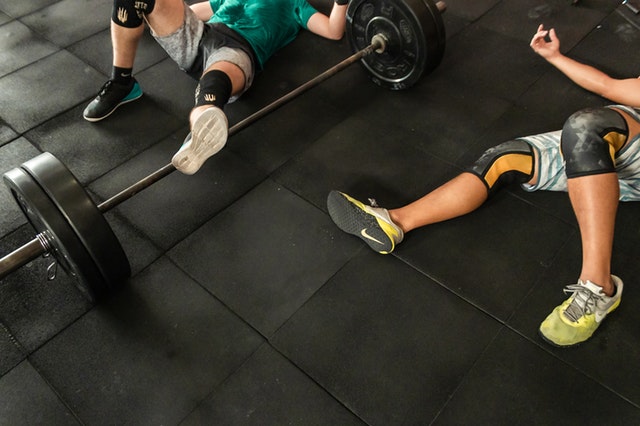If you ask your medical provider what the secret to a healthy life is, most will give you two words: diet, exercise. These two words seem to be the answer to most health related questions. Do you want to lose weight? Answer: diet and exercise. Do you want to gain weight? Answer: diet and exercise. Is your blood pressure too high? Answer: diet and exercise.
For the purpose of this blog, I want to focus on the exercise portion. For most of my patients, returning to a regular workout routine is one of the functional goals we discuss during the initial evaluation. As a physical therapist, I have the opportunity to help my patients return to the field, gym, cycling, running, or whatever their form of exercise is. Along with the strengthening exercise program that I give my patients, they will also hear my schpiel of workout tips.
ALWAYS START WITH A GOOD WARM-UP
It’s not the best idea to start lifting weights, run sprints, play in a pick-up basketball game, or participate in other workout routines without first, warming up your muscles. You want to get your heart rate up a bit and get the blood pumping through your body to “prep” your body for the increased demand you are about to put on it, and to allow your muscles to become more flexible. Think of your muscles like spaghetti noodles; if you try to bend raw noodles they will break, but if you bend the same noodles after cooking they will bend easily. Something as simple as a brisk walk, a short bike ride, or a light jog for about 5 minutes is typically plenty of time.
Following a light aerobic workout, it is also a good idea to do dynamic warm-up movements. Dynamic warm-up includes full body movements. If you do a Google search for “dynamic warm up exercises” multiple lists come up. Pick a few exercises for arms, legs, and core. A few that I choose are: high knees, butt kickers, Frankensteins, skips, side shuffles, lateral lunges, grapevine (carioca), Spiderman lunges, lunge with trunk twist, small arm circles, large arm circles, self hugs.
STAY HYDRATED
Drink water (or electrolyte beverage) before, during, and after your workout. Health authorities recommend eight 8-ounce glasses of water a day; but if you are working out the number should be higher. The exact number of glasses varies from person to person. A good self-test is to observe urine color. If you are drinking enough water, your urine will be clear or a light yellow color. If your urine is a darker yellow, you need to drink more water. Don’t wait until you feel thirsty to start drinking water. If you wait until you are thirsty, you are already dehydrated.
QUALITY OVER QUANTITY
Here is where I get on my soapbox.
Only perform as many repetitions as you can with proper form. If you complete 20 squats but after 10 squats your form starts to fall apart, then really, you only performed 10 productive squats. Taking breaks is ok! It doesn’t do you any good to do any lift with poor form. In fact, that is how many injuries occur. The best way to make sure you are doing your exercises correctly is to perform the movements in front of a mirror and stop the activity once your form starts to falter. When clients schedule “wellness” visits, proper form is a huge part of the session. I go over what should happen as well as common movement faults. If this is something you are interested in don’t hesitate to contact me.
Another thing worth mentioning here, is the amount of weight lifted. For some, being able to brag about the hundreds of pounds they can lift is very important, and there is nothing wrong with that. However, if you can’t lift the “hundreds of pounds” with correct form, you actually CAN’T lift that much weight. I once overheard in a gym, “Hey, good job! You were able to lift “X” amount of weight…your form was terrible, but you lifted it!” This is a dangerous mentality to have, especially if your workouts involve performing Olympic or Power lifts, as severe injury is likely to occur. The amount of weight should be whatever you can lift with proper form. Allow me to emphasize that last bit. With. Proper. Form.
[steps off soapbox]
LISTEN TO YOUR BODY
Your body tells you a lot, you just have to learn how to listen and acknowledge what your body is saying. I’ve heard a few times that “pain is weakness leaving the body”; actually, pain is just one of your body’s ways of telling you that something is off. If something hurts, don’t do it. There are numerous reasons why you feel pain. It is my job to figure out why and work with you to fix the root cause.
STRETCH AFTER WORKING OUT
After your workout, perform gentle stretches to help decrease soreness. During your workout, you asked your muscles to contract (get shorter). Stretching after your workout helps to restore your muscles to their natural “resting length”. The intensity of the stretch should feel like a gentle pull. You shouldn’t stretch so hard that you feel like your muscles are going to rip. A light stretch is adequate.
ICE – 15 MIN
Ice is something that varies with each individual. Some people like ice and notice benefits, and others don’t care for it. If ice is something that works for you, then feel free to ice after activity. There are a few guidelines for safe icing: 1) always place a barrier between the ice and your skin to avoid an ice burn. A single layer of paper towel or plastic wrap is plenty. 2) Only ice for 15 minutes. Anything longer than 15 minutes causes your body to go into protection mode to avoid hypothermia and your body will actually start heating up the tissue. This response is called the Hunting Reaction.
Starting a workout program can be intimidating, but Dr. Jones can help guide you through a safe and effective workout routine. If you desire a customized workout routine, have questions about the topics addressed in this blog, or have an injury that is keeping you from completing your workouts, contact Dr. Jones to schedule an appointment (480) 702-1634 or info@GameChangerPT.com


Awesome post! Keep up the great work! 🙂